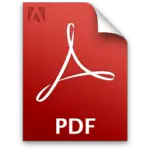Lesson 1.5 – Fluid Recovery
Preamble
Approximate time to complete this lesson: 15 minutes.
Lesson 1.5 Video
Begin Lesson 1.5 by watching this video (4 minutes, 34 seconds)
Review of Lesson 1.5
Procedures:
Top-Drain Fluid Extraction
- Define your work area by using cones or caution signs. Notify others not to produce sparks or flames within 11 meters of the area and always have a Spill Kit nearby in case of accidental spills.* This lesson demonstrates the use of a SEDA system, but manual pumps are commonly used as well.
- Top-drain radiator coolant reservoir.
- Top-drain the brake fluid reservoir.
- Top drain the power steering fluid reservoir.
- Top-drain the windshield washer fluid reservoir.
- Remove the fuller filler (gas) cap.Bottom-Drain Fluid Extraction
- Lift vehicle with hoist (or place on rack with forklift). Check load points before working under vehicle.
- Ensure load locks on hoist are in place.
- Siphon or pump fuel from tank(s). Place a catch basin or proper fuel containment under the vehicle.
- Unbolt the empty tank.
- Disconnect the fuel pump electrical wiring. Never cut fuel lines or pump wire harness.
- Place empty tank in safe storage area.
- Drain the engine oil. Place proper catch basin underneath.
- Drain the transmission fluid. Place proper catch basin underneath.Drain differential(s). Replace covers after draining.
Quality Control:
- All fluids must be contained in their own environmental-safe catchment.
- For a detailed list of environmental best practices, see “Guidebook for the Vehicle Dismantling and
- Recycling Industry Environmental Planning Regulation”. (See below)
- Always replace caps or plugs after fluid extraction. Ensure that all liquid wastes are stored in a secondary containment. Secondary containment is defined as 110% of the largest container or 25% of the total volume of containers.
- Never work under a suspended load with a forklift.
- If you are using a siphon system it is recommended practice to cut the filler (rubber only) filler neck and place siphon into tank. It is recommended to never cut the straps of a full tank and poor contents into container.
- Remove caps or plug after fluid extraction.
- 4×4 vehicles may have 2 drive shafts as well as 2 fuel tanks.
- Newer vehicles typically have a drain plug for siphoning. Differentials.
- If using a drill to drill into tank it must be pneumatic. NEVER use an electric drill.
- Specialty tools include hose clamps, Spill kit, Fuel line disconnect tool, Clip release-pick.
Health & Safety:
- Draining systems will vary from company to company, see management for these requirements. Always replace caps after draining fluid.
- Identified risks include risk of flame or sparks – make sure no one performs operations that could produce sparks e.g. welding-grinding etc.
- Consult WHMIS AND MSDS.
- Standard Personal Protection Equipment (PPE) applies.
- Have an ABC extinguisher nearby.
- It is important to eliminate any power source to ensure that no components will produce sparks.
- Spills should be attended to immediately. Large spills should be reported to your supervisor.
- All fluids must be stored and properly labelled secondary storage containment.


